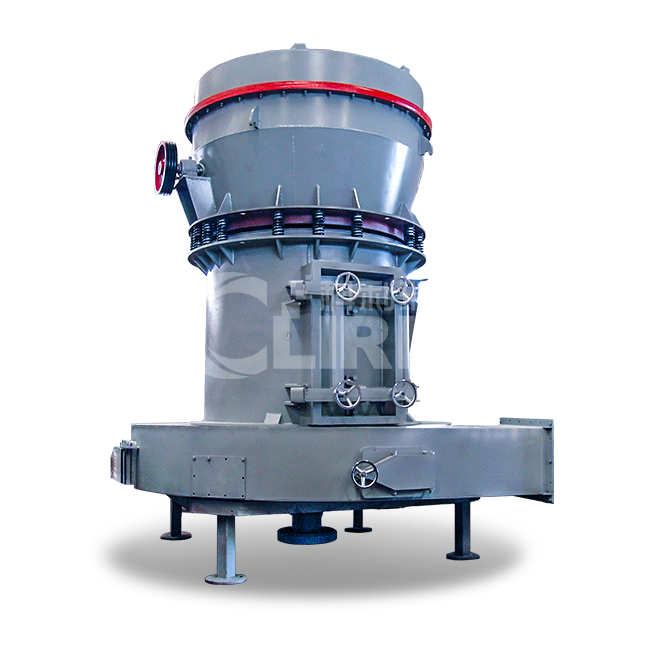
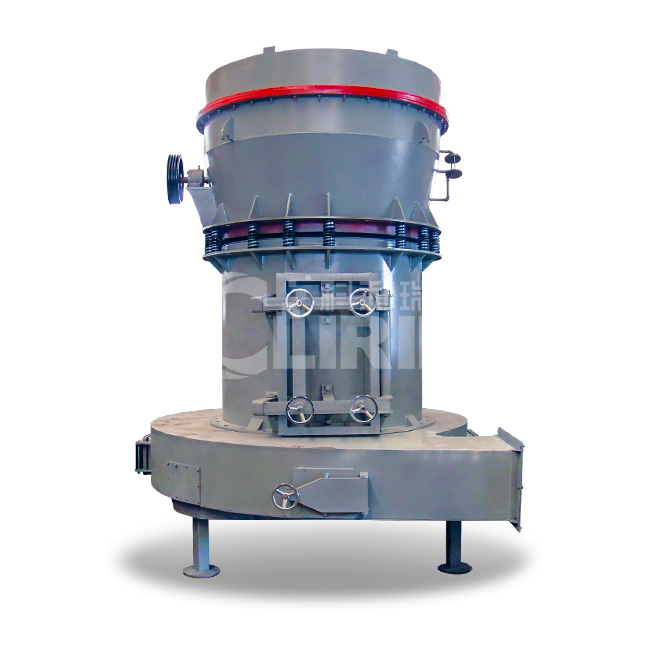
Raymond roller grinding mill is mainly applicable to the grinding and processing of mineral product materials such as metallurgy, building materials, chemicals, and mines.
Raymond mill can process various non-flammable and non-explosive mineral materials with Mohs hardness below 6 and humidity less than 6%.
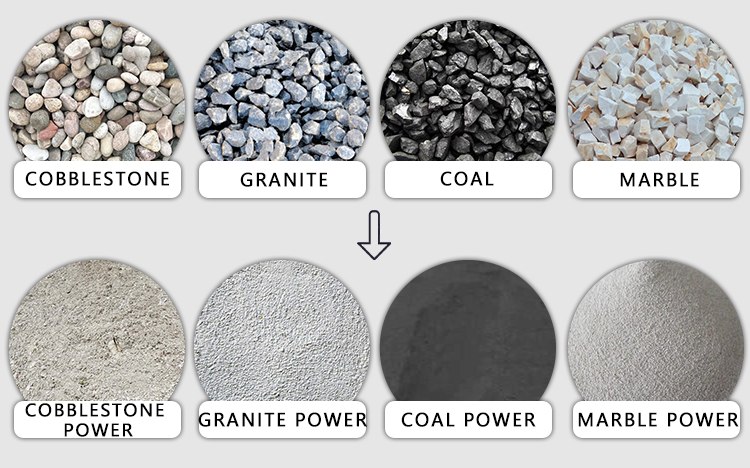
Raymond mill can grind quartz, feldspar, calcite, talc, barite, fluorite, rare earth, marble, ceramics, bauxite, manganese ore, iron ore, copper ore, phosphate rock, iron oxide red, zircon sand, slag, water slag, cement clinker, activated carbon, granite, garnet, iron oxide yellow, soybean cake, chemical fertilizer, compound fertilizer, fly ash, bituminous coal, coking coal, lignite, Lingmei sand, chromium oxide green, gold mine, red mud, clay, kaolin Coke, coal gangue, porcelain clay, kyanite, fluorite, bentonite, Maifanshi rhyolite, pyrophyllite, shale, purple sandstone, chlorite, stromatolite, basalt, gypsum, graphite, silicon carbide, thermal insulation, materials, etc
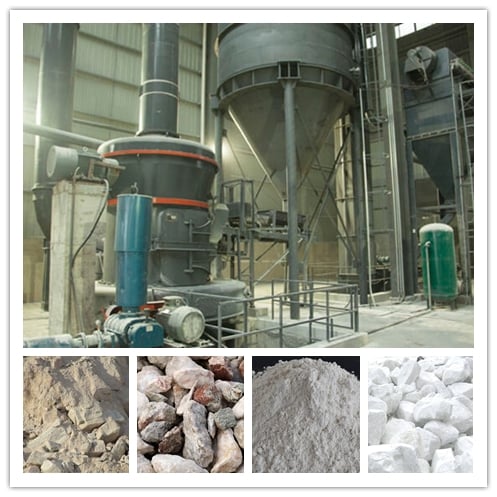
Raymond mill can be applied to Calcium carbonate crushing and processing, gypsum powder processing, power plant desulfurization, non-metallic ore milling, pulverized coal preparation, etc
The complete equipment of Raymond roller mill is composed of the main machine, reducer, analyzer, pipeline device, blower, dust collector, jaw crusher, bucket elevator, electromagnetic vibration feeder, electric control system, etc.
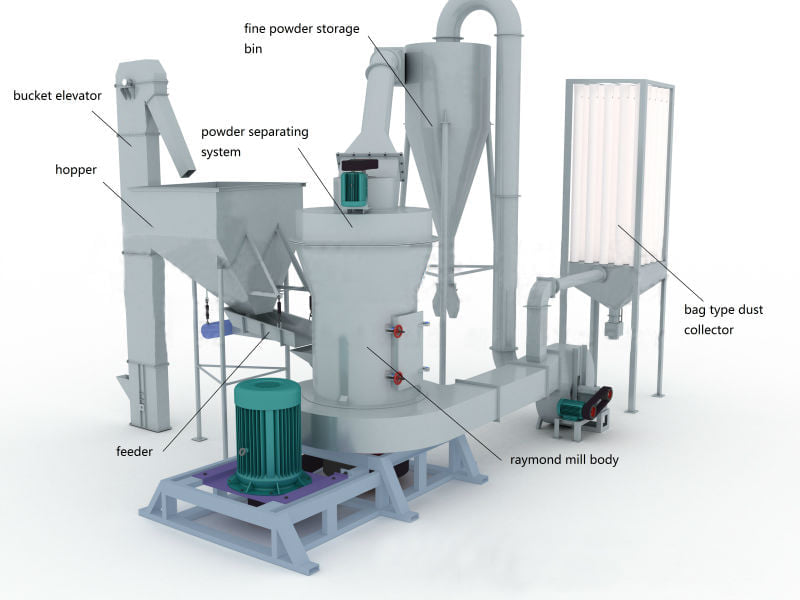
Working principle of Raymond Mill:
In the Raymond mill, a Raymond mill spring with a pressure of 1000-1500 kg is fastened to the grinding roll hanger.
After starting work, the grinding roller rotates around the main shaft and rolls close to the grinding ring under the action of the Raymond mill spring and centrifugal force.
Its rolling pressure is 20% higher than that of Raymond mill under the same power conditions, so the output is greatly improved.
When the milled materials enter the grinding chamber, they are scooped up by the shovel and sent between the grinding roll and the grinding ring for rolling.
The rolled powder is brought into the analyzer with the circulating air of the blower.
The qualified fine powder flows into the cyclone powder collector with the air, which is the finished product.
Large particles are reground after falling behind.
The circulating air returns to the blower to repeat the above process, and the remaining air enters the bag filter.
When the grinding roll and ring are worn to a certain extent, adjust the length of Raymond mill spring to maintain a constant grinding pressure between the grinding roll and ring, so as to ensure stable output and fineness.
| Model | Roller Quantity (piece) | Roller Diameter (mm) | Roller Height (mm) | Ring Inner Diameter (mm) | Ring Height (mm) | Feeding Size(mm) | Finished Size(mm) | Mill System Power(KW) | Capacity (t/h) | Overall Dimension (mm) |
|---|---|---|---|---|---|---|---|---|---|---|
| YGM7815 | 3 | 260 | 150 | 780 | 150 | 15 | 0.613-0.033 | 35.7 | 1.0-3.0 | 4300*3500*5100 |
| YGM9517 | 4 | 310 | 170 | 950 | 170 | 25 | 0.613-0.033 | 72.65 | 2.1-5.6 | 7100*5900*7900 |
| YGM1280 | 3 | 370 | 240 | 1170 | 240 | 20 | 0.613-0.033 | 145.15 | 4.5-12.0 | 9300*5600*8200 |
| YGM1300 | 4 | 410 | 280 | 1270 | 280 | 20 | 0.613-0.033 | 202.15 | 6.5-16.0 | 9100*8200*8400 |
| YGM1620 | 4 | 450 | 300 | 1500 | 300 | 20 | 0.613-0.033 | 322.2 | 8.0-20.0 | 12500*5700*10500 |
| YGM1720 | 4 | 510 | 300 | 1720 | 300 | 35 | 0.613-0.033 | 450 | 10.5-28.0 | 11550*9500*1050 |
Important Factors Affecting the Production Capacity of Raymond Mill
Before starting the Raymond mill in the Raymond mill workshop, check whether all inspection doors are tightly closed, check whether the gap between the palate plates of the crusher meets the size of the feed particle size, and adjust the rotation speed of the analyzer to meet the requirements of approximate finished product particle size. Finally power on in the following order.
The simple Raymond mill operation sequence is as follows:
Start: hoist → crusher → analyzer → fan → host → feeder. When the Raymond mill is stopped, the machines should be shut down in the following order:
The stop sequence of the simple Raymond mill is:
Feeder→Host→Blower→Analyzer. Note: After the elevator transports a certain amount of material to the silo, stop the crusher first and then stop the lifting. This item should be changed by the current storage amount.
Raymond mill is not allowed to refuel at will during normal operation. To ensure production safety, if abnormal noise occurs in any part of the mill, or the load suddenly increases, it should be stopped immediately for inspection and troubleshooting to avoid major accidents. The remaining material in the mill must be taken out when starting up again, otherwise, the current is too large when starting up, which will affect the start-up.
+86(021)58974855
No.19, Fuqing Rd, Pudong New Area, Shanghai, China.
ALL RIGHTS RESERVED © CLIRIK
